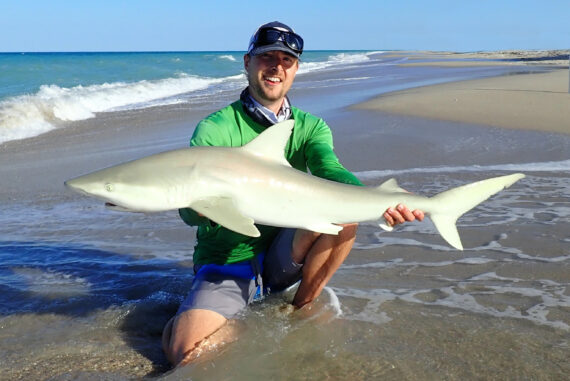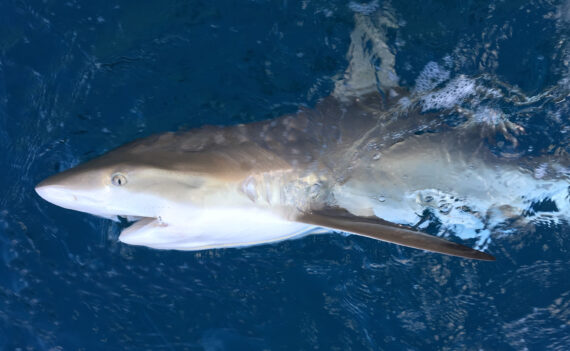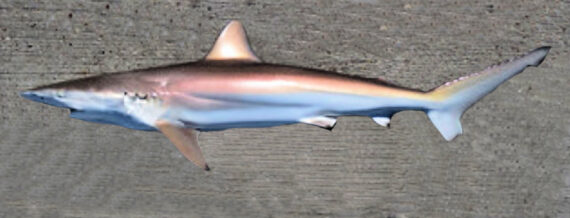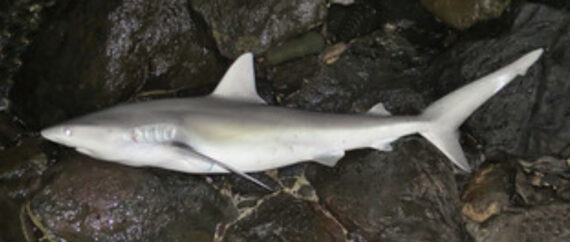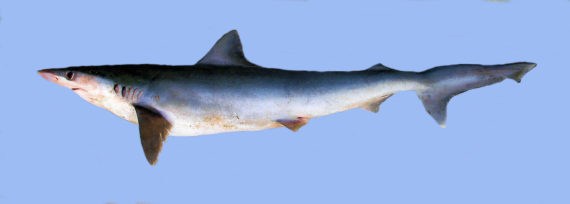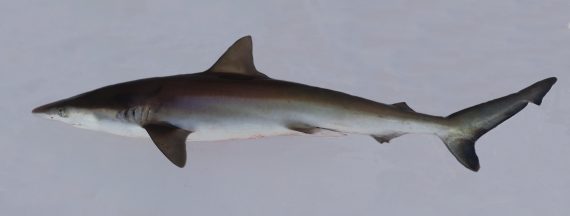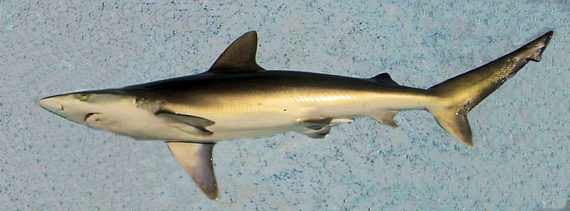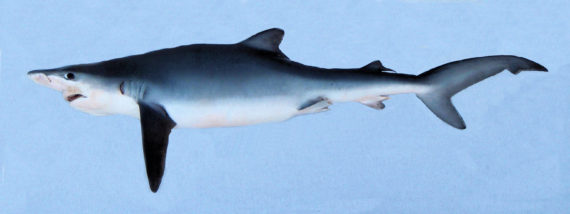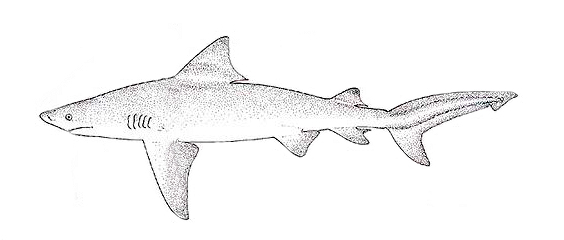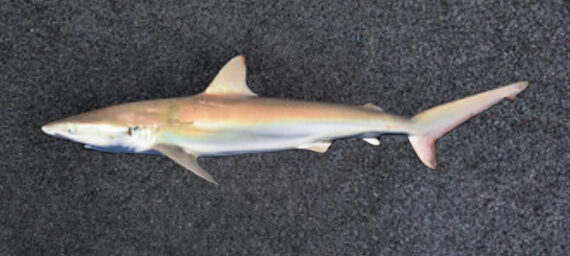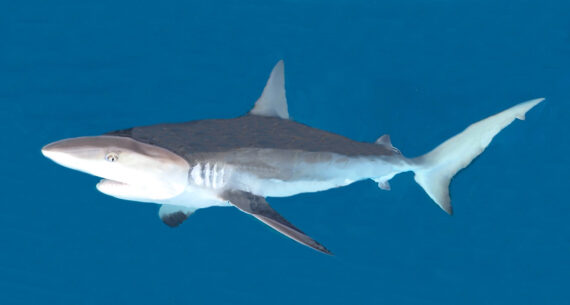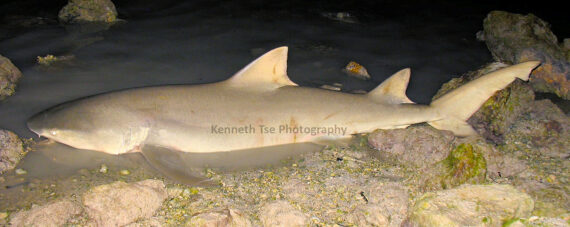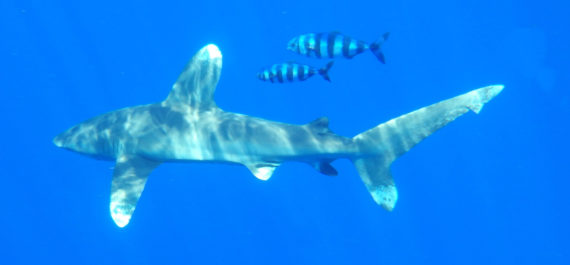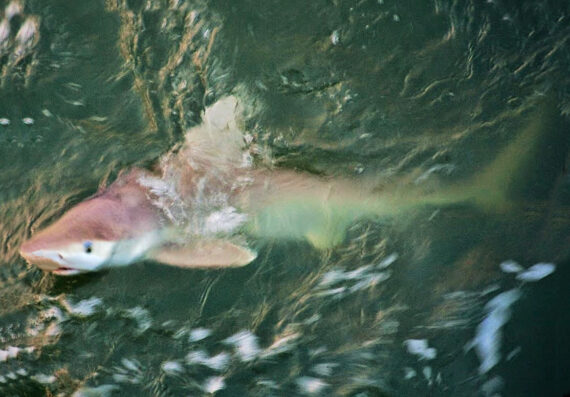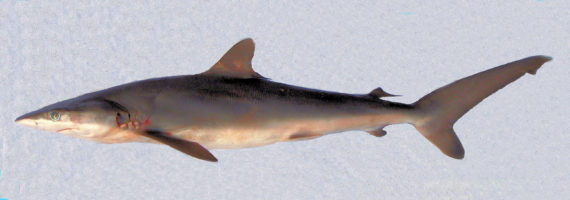The Requiem Shark Family – Carcharhinidae
There are currently TWENTY-ONE members of the Requiem Shark of Carcharhinidae Family, five from the Atlantic Ocean, five from the Pacific Ocean, and eleven found in Mexican waters of both the Atlantic and the Pacific Oceans, presented in this website:
FROM THE ATLANTIC (5):
FROM THE PACIFIC (5):
FROM THE ATLANTIC AND THE PACIFIC (11):
The Requiem Shark or Carcharhinidae Family is a fairly large family with sixty global members that have been placed into twelve genera of which twenty-four species are found in Mexican waters, eight from the Atlantic, six form the Pacific and ten that reside in both the Atlantic and Pacific Oceans. The family includes the well known Blue Sharks, Lemon Sharks, Sharpnose Sharks, Tiger Sharks, Whitenose Sharks, and Whitetip Sharks. They are popular and important food fish. They are one of the largest and best-known families of sharks, second in number to the Catsharks. They are found worldwide in tropical and temperate waters. Due to the similar appearance of the species, the Requiem Sharks are exceedingly difficult to tell apart. In Mexico they are known as tiburónes gambuso.
The Requiem Sharks have slender torpedo-shaped to stout bodies. Most are gray and transition to white ventrally. Their head has a wide blunt pointed or rounded snout that can be long or short. They have round eyes with well-separated nostrils and lack spiracles. Their mouth has rudimentary upper lip folds that are almost vertical at the corners and are equipped with large blade-like sharp pointed teeth that differ on their upper and lower jaws. They have two dorsal fins. The first dorsal fin is much larger than the second but is smaller than the upper caudal fin lobe and is inserted closer to the pectoral fins than to the pelvic fins. The second dorsal fin originates over the anal fin. They have 5 gill slits, the last 2 are located over the pectoral fin base. The rear edge of their anal fin is notched. They lack the longitudinal ridge on the sides found in other sharks. Their caudal fin is strongly asymmetrical with a well-developed lower lobe, an undulating ridge along the dorsal surface of the top lobe, a notch under the tip and the base, and no keel.
The majority of Requiem Sharks are highly migratory, pelagic, and circumglobal being found in all temperate and tropical waters. They are strong and powerful swimmers found individually or in small to large groups in the open ocean and near shore. They have been known to enter brackish and fresh water systems. They are mid-sized and vary from just over 2 m (2 feet) to 8 m (24 feet) in length. They have the sophisticated ability to sense vibrations to locate prey and are voracious predators that feed on fish, squid, octopus, lobsters, turtles, marine mammals, seabirds, as well as human garbage and debris. Juveniles fall prey to larger sharks and various sea mammals. Reproduction in most species is viviparous with young being born as miniature adults.
The Requiem Sharks and sought after commercially for their fins, meat, liver oil, and leather. Many were an important food source for Native Americans. The Requiem Sharks, and specifically the Bull, Caribbean Reef, and Oceanic Whitetip Sharks, are considered very dangerous to divers, surfers or swimmers and are believed to generate about 50% of the reported 100 shark attacks on humans each year of which 30% are fatal. They are known to become very aggressive when food is present or their territory becomes threatened. From a conservation perspective, they have undergone a dramatic decrease in their populations approaching a 75% decline over the last forty years. For example, all nineteen Requiem Sharks included here are currently listed as Near Threatened or Data Deficient (due to their rarity). They date to the Early Cretaceous period, 144 million years ago.

